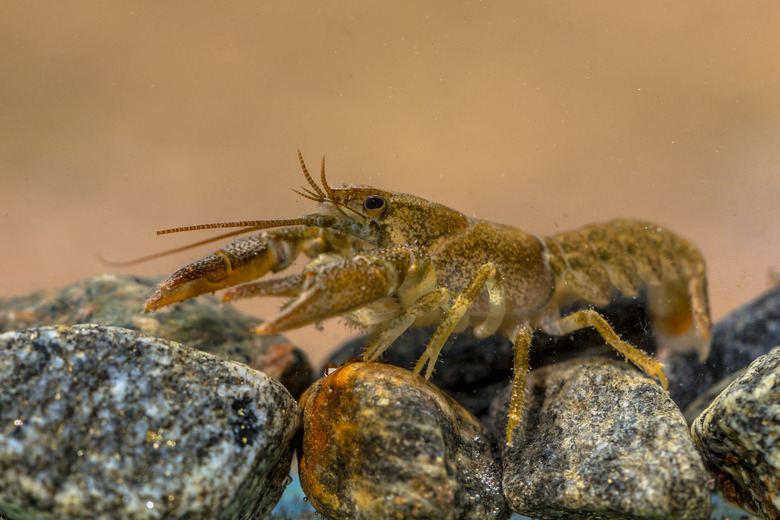Plant & Animal Adaptations To Freshwater Ecosystems
Adaptations are genetic and evolutionary traits that are unique to a species or group of species and allow them to live in a specific environment. In the case of freshwater environments, some animals and plants have adapted to live where the environment is tumultuous or in some way requires traits that they do not typically need.
Hawaiian Freshwater Fish
Hawaiian Freshwater Fish
There are five native species of fish, all gobies, found in Hawaii's freshwater systems. They show the necessity for adaptation not only in freshwater stream systems, but also on tropical islands that are often affected by harsh geographical and meteorological conditions. When born, larvae of these fish are downstream in the ocean, where they live in estuaries for five or six months as they grow. This lifestyle, based on an amphidromous lifecycle, is one adaptation. These fish also have pelvic sucking disks which allow them to attach to rocks and other hard surfaces in order to withstand strong tidal movements.
When these fish are adults, they are adapted to swimming against the current in order to get back upstream and into the freshwater streams. They all are also adapted to climbing waterfalls using powerful swimming movements, their pelvic sucking discs and, in the case of a couple of these fish, an underside mouth that acts as a second sucking disc.
Freshwater Plant Leaves
Freshwater Plant Leaves
Freshwater plants have adapted various types of leaves, depending on where they are located on the plant. Underwater leaves are very thin in order to be able to absorb as much diffused light as possible. In some plants, they are so thin they appear as strands of algae. Floating leaves are also common. These leaves are broad and have lacunae that contain gas to offer the leaves buoyancy. Willow trees adapt long, narrow leaves with tapered tips. They grow above water but drape down so that their tips are sometimes submerged. Their shape allows them to be moved freely by running water, but also keeps them from tearing during this continuous action.
Crayfish Adaptations
Crayfish Adaptations
Sometimes, freshwater environments require animals to adapt to low-water or low-oxygen environments, such as in the case of shallow river beds. A look at freshwater species of crayfish reveals how certain freshwater animals adapt to these conditions. All of the more than 400 species of freshwater crayfish are adapted to tolerate low oxygen conditions and exposure to the air. Behaviorally, they also are adapted to live for extended periods in burrow systems under mud in case there is an absence of surface water.
Aerenchyma
Aerenchyma
Aerenchyma are important adaptations for many species of freshwater plants. This is a spongy tissue composed of holes made by cells either breaking apart or disintegrating. These holes, which run longitudinally up the root system of plants like corn and gamagrass, allow the plant to siphon air from the above-water parts of the plant in order to receive necessary gasses. This adaptations is suited to plants that live in flooded areas like riverbeds or wetlands.
Cite This Article
MLA
Orwell, Mark. "Plant & Animal Adaptations To Freshwater Ecosystems" sciencing.com, https://www.sciencing.com/plant-animal-adaptations-freshwater-ecosystems-8371593/. 23 April 2018.
APA
Orwell, Mark. (2018, April 23). Plant & Animal Adaptations To Freshwater Ecosystems. sciencing.com. Retrieved from https://www.sciencing.com/plant-animal-adaptations-freshwater-ecosystems-8371593/
Chicago
Orwell, Mark. Plant & Animal Adaptations To Freshwater Ecosystems last modified August 30, 2022. https://www.sciencing.com/plant-animal-adaptations-freshwater-ecosystems-8371593/
